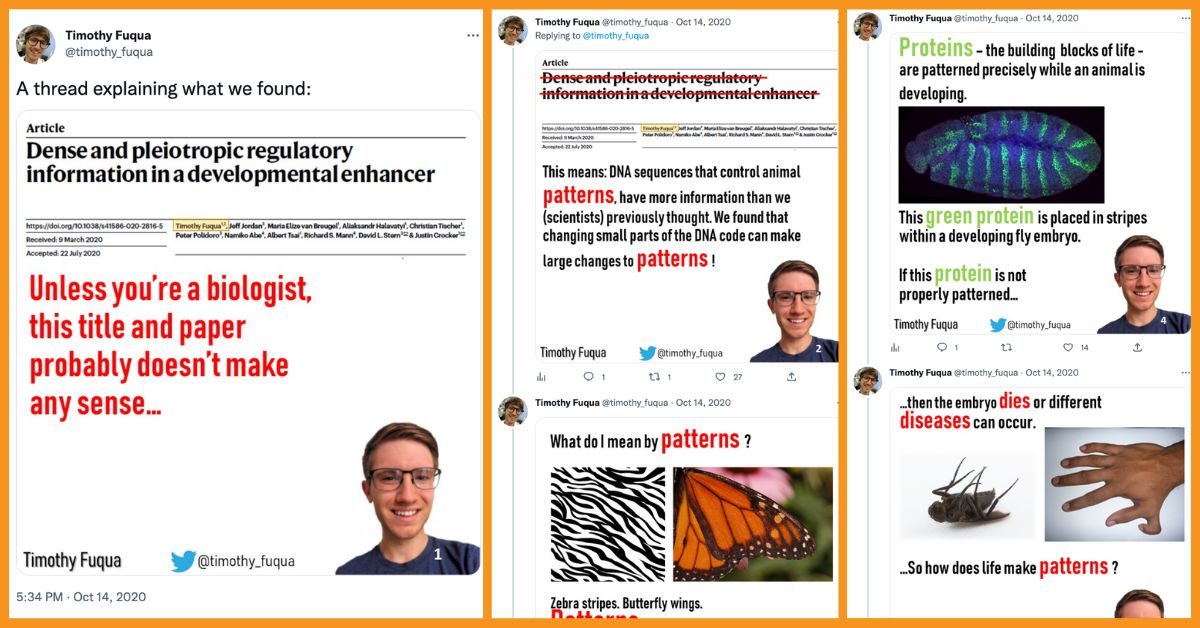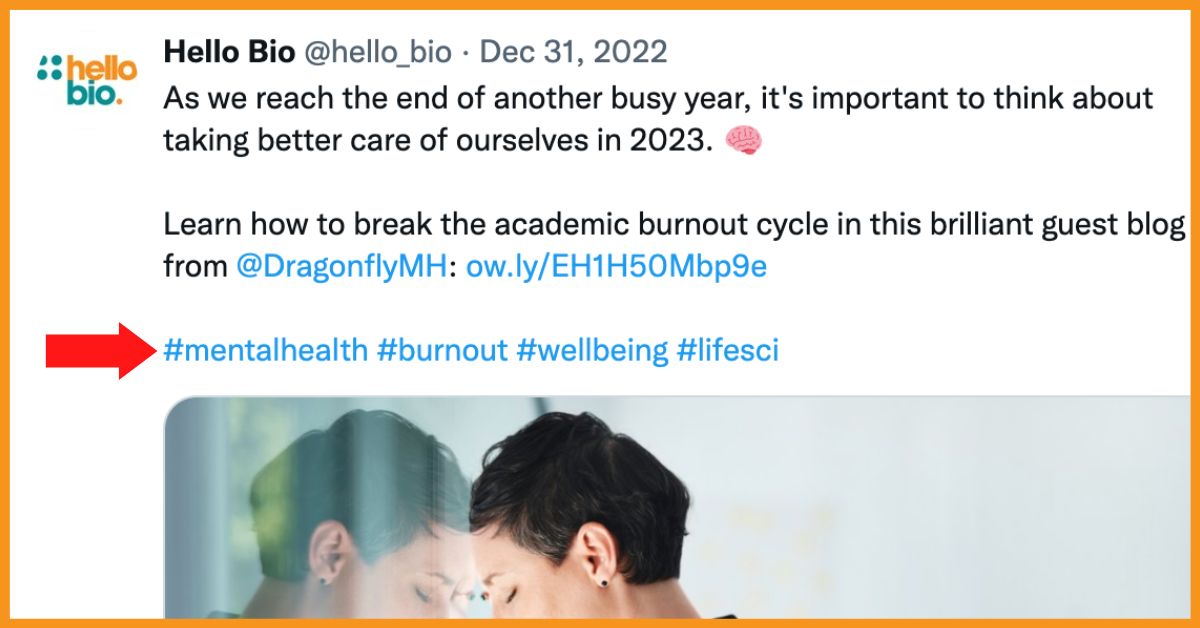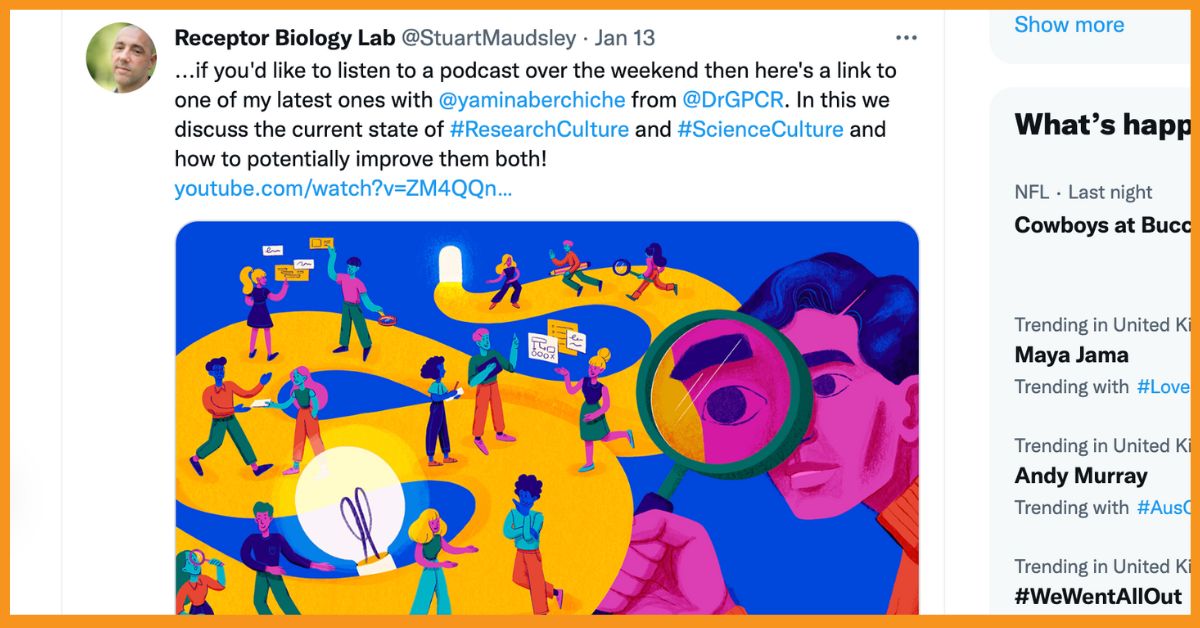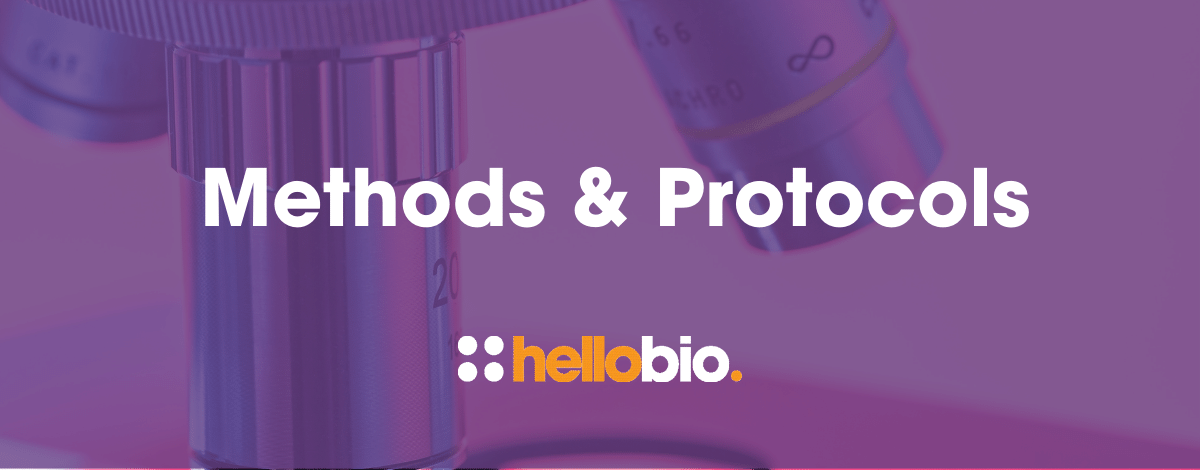10 Twitter Tips for Life Scientists
Social media is a powerful tool for communication and a great way for scientists to connect with each other. Despite the recent high-profile changes at Twitter HQ, the platform remains popular with life scientists who regularly share their advice and ideas with the world through the networking service.
With so many researchers active on the platform, science feeds are busy and constantly updating, so how can you make your tweets stand out from the crowd? Science communicator and podcaster Dr Elodie Chabrol of Sous La Blouse/Under the Lab Coat shares 10 handy tips to help you build up your follower count and tweet like a pro!
1. Ensure you have a well-written bio
Your profile description/bio can influence whether a user decides to follow you or not. It must be clear and up-to-date. Insert links where possible, for example a link to your lab or institute’s own Twitter profile, and any other relevant associations you might be involved with. You can also add the '#' of topics that you frequently cover. Your future followers should know at a glance what to expect if they follow your account. It can also be a nice touch to add emojis to your bio, to give a visual representation of not only your professional interests but your personal interests too. Take a look at this great example from postdoc Dr Shane Hellyer of Monash University, Australia:
2. The shorter the tweet, the better
The ideal tweet does not have a defined length, and does not need to use all of your character capital. Keep in mind that the shorter the tweet, the better chance it has of being read, engaged with, and potentially going viral. Remember that any added links count towards the character limit of your tweet, so keep this in mind when choosing your words.
3. Communicate clearly
Just because you have a character limit, it doesn't mean you must always use abbreviations or forget the basic rules of writing! Be sure to proofread your words before hitting that ‘Tweet’ button: a spelling mistake in such short messages can be very obvious.
4. Tell a story using threads
Sometimes one tweet is not enough to say everything you want to say. In this case, use a thread (a series of tweets published by one person that are all connected). By linking multiple tweets it allows you to provide more context and give more information. To use threads, post the first tweet, then reply to it or press '+' to add each subsequent tweet.
Here’s a great example from postdoc Timothy Fuqua of the Andreas Wagner Lab at the University of Zurich, who shared some of his findings through an eye-catching thread of explainer images:
View the full post here: https://twitter.com/timothy_fuqua/status/1316417146541481986?s=20
5. Share more information via links
Whenever you can, share a link to a website, article or video that is relevant to your tweet. This will enrich your content and users will appreciate being able to instantly find out more information about the topic.
6. Promote keywords through hashtags
Twitter users often place the hashtag symbol (#) in front of a relevant keyword or group of words in their tweet to classify it into a category and make it easier for them to appear in Twitter search results. When you click or tap a word preceded by a hashtag in a message, all other tweets containing that hashtag are displayed. Hashtags can be inserted anywhere in a tweet. Popular hashtags (used by a lot of people at a given moment) are found in trends.
In Hello Bio’s final tweet of 2022 they took the opportunity to reshare a fantastic guest blog post on burnout in academia by the team at Dragonfly Mental Health. They included the hashtags #mentalhealth, #burnout and #wellbeing so that the tweet would be grouped with other articles on the same topic, maximising its chances of being found by others searching for similar content:
View the full post here: https://twitter.com/hello_bio/status/1609097187396403201
7. Plan your posts in advance
If you are going to be away from technology for a few days, you can schedule tweets direct from Twitter on a desktop computer or laptop (this function is not available from the app on a tablet or phone). You could also use this feature to help you to be more considered about when and why you are tweeting, rather than bombarding your followers with multiple tweets per day.
8. Don’t start a tweet with @
A tweet that begins with @ is considered by Twitter as a reply, so it will not appear in your timeline. On top of that, the only people who will see it are those quoted in the tweet. We see this error in tweets that are trying to promote an account, and this actually results in very little reach. Avoid it!
PRO TIP: You can override this problem by adding a '.' in front of the @ or an emoji ????
9. Include visual media such as photos, videos or GIFs
A tweet with a visual will encourage your fellow users to read your post and is much more eye-catching than a tweet made up only of text. Tweets with visuals are 34% more likely to be retweeted. You can also use online software such as BioRender to make simple schematics to accompany your Twitter posts.
In this example, Professor Stuart Maudsley of the University of Antwerp uses a colourful and eye-catching image to share a link to a podcast recording. He also links to the Twitter handles of those involved and uses hashtags relevant to the topic of the podcast:
View Stuart's post here: https://twitter.com/StuartMaudsley/status/1613921986778140673
10. Use the power of lists
And finally, lists are specific groups of Twitter accounts. You can create your own list relevant to your interests, or subscribe to lists made by others. Viewing the feed of a list will show you a stream of tweets from just the accounts included on this list. It's an amazing way to focus on specific subjects.
Here’s an example of a list I made to include Twitter users who tweet about science communication and engagement initiatives around the world: https://twitter.com/i/lists/1172160817216872448
About the author
Dr Elodie Chabrol is a freelance science communicator and the host of Sous La Blouse, a French language science podcast. She is a former Neuroscience researcher who completed her PhD in Paris and worked for 8 years in London, during which time she founded the Pint of Science festival in France. She left lab work in 2017 in order to help scientists share their fascinating stories and spread the love of science to the public. Her mission is to make science accessible to everyone, everywhere!
Take a look at her website, connect with her on Instagram, Twitter, LinkedIn or by email: contact@elodiechabrol.com
__________________________________________________
If you enjoyed this article, why not check out the other resources available on our blog. We are passionate about supporting life scientists including early career life scientists and PhD students - with really low-priced reagents, antibodies and biochemicals, early career scientist grants, and resources to help with both personal and professional development. We know how tough it is - so we hope you find these helpful!
More General Support for Life Scientists
For advice on wellbeing, dissertations, presenting at conferences, wellbeing, PhD support, networking and lots more, we have a huge range of articles to help - just click below:
Save up to 50% on our high purity reagents...
When you get to the stage of planning your experiments, don't forget that we offer a range of low-cost, high-purity agonists, antagonists, inhibitors, activators, antibodies and fluorescent tools (yes - they really are around half the price of other suppliers!) You can use our Quick Multi-Search Tool to search for lots of products in one go, and the range includes:
- Enzyme inhibitors and activators
- Chemogenetic ligands
- Ion channel modulators
- GPCR & ionotropic receptor ligands
- Cell biology reagents & biochemicals
Technical resources
Try our Molarity Calculator: a quick and easy way to calculate the mass, volume or concentration required for making a solution.
Try our Dilution Calculator: an easy way to work out how to dilute stock solutions of known concentrations
We also offer a comprehensive range of technical resources including antibody protocols and methods, product guides and mini-reviews:
And finally, don't forget to check back in with our blog regularly for our latest articles. If there’s something you’d love to contribute to the community, whether that’s an interview or article, drop us a line at hello@hellobio.com
---























